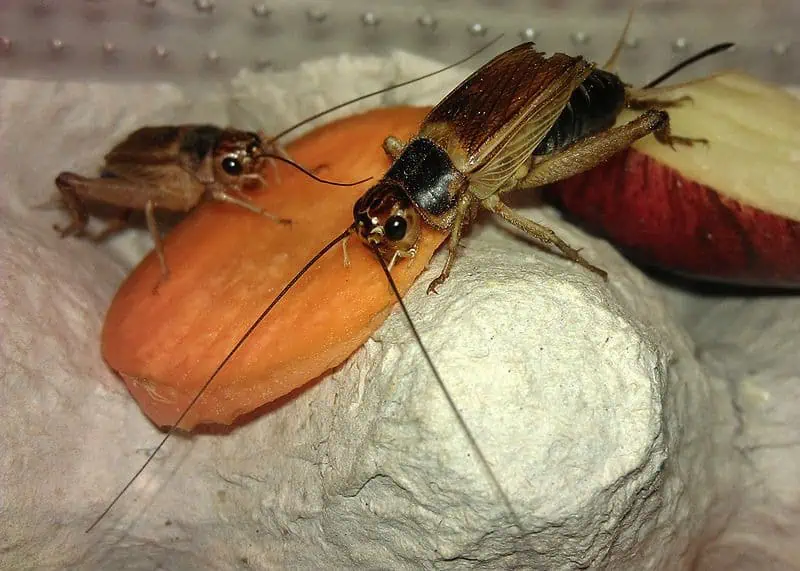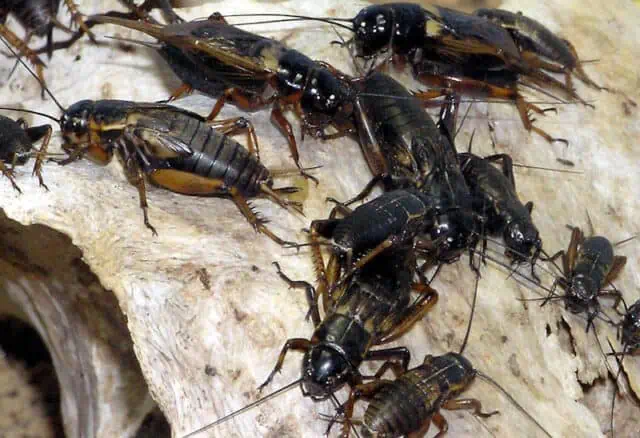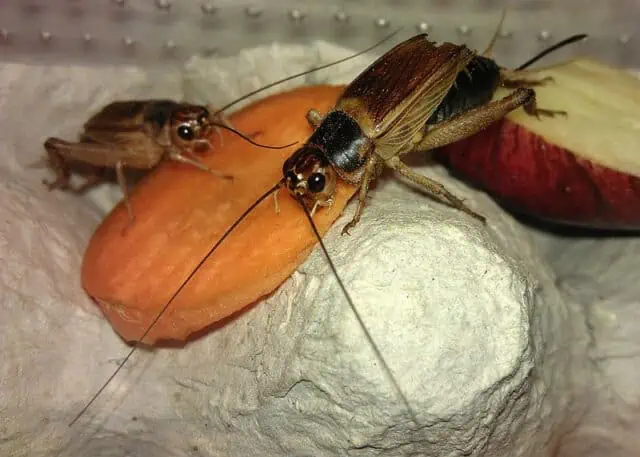Absolutely, leopard geckos can indeed eat crickets! These small reptiles often relish the hunt of a lively cricket, making crickets not only a source of nutrition but also a form of entertainment. For many leopard gecko enthusiasts, feeding crickets is an essential part of their pet’s diet.
Can Leopard Geckos Eat Crickets?
Certainly! Leopard geckos can, and often do, eat crickets as a part of their natural diet. These agile predators, native to the arid regions of South Asia, have evolved to consume a variety of insects, with crickets being a common choice. The movement and texture of crickets not only appeal to their predatory instincts but also contribute beneficial nutrients essential for their growth and overall health.
Is eating crickets a good option for leopard geckos?
Absolutely, crickets are a fantastic dietary option for leopard geckos. One of the primary reasons is their high protein content, which caters to the gecko’s need for muscle growth and energy. The act of chasing and capturing a cricket also simulates their natural hunting behavior, providing them with mental stimulation and a sense of fulfillment.
The nutritional benefits of crickets extend beyond just protein. They are a rich source of essential vitamins and minerals, such as calcium, which is crucial for maintaining strong bones in leopard geckos. Additionally, they contain fatty acids that play a role in supporting a healthy nervous system.
However, while crickets are packed with nutrition, it’s essential for a leopard gecko to have a varied diet. Just as humans need an array of foods to receive all the necessary nutrients, so do these reptiles. Other insects like mealworms, superworms, and dubia roaches can also be introduced to their diet. These alternatives offer different flavors and textures, ensuring that the gecko doesn’t grow bored of its meals. Plus, each insect brings a unique set of nutritional benefits, making it even more crucial to offer a mix.
Lastly, while crickets are undeniably beneficial, it’s essential to provide them in moderation. Overfeeding can lead to obesity and other health issues.
What size cricket should be offered to Leopard Geckos?
When it comes to feeding leopard geckos, the appropriate size of the cricket plays a pivotal role in ensuring their safety and satisfaction. The cricket’s size should be directly correlated with the age and size of your gecko.
For baby or juvenile leopard geckos, small-sized crickets are the go-to choice. These crickets are easier to digest, reducing any potential strain on the young gecko’s developing system. As the gecko matures and grows in size, they can then progress to medium-sized crickets. And for those fully-grown, large leopard geckos, large-sized crickets are ideal, meeting their increased nutritional requirements.
A handy rule of thumb to determine the appropriate cricket size is to compare the space between the gecko’s eyes to the cricket’s size. Ideally, the cricket should be no larger than the distance between those eyes. This method ensures that the cricket is not too big for the gecko to handle or digest.
Moreover, it’s crucial to consider the width of the gecko’s throat when selecting crickets. Offering prey that’s too large can lead to choking hazards, creating a dangerous situation for your beloved pet. Always err on the side of caution and opt for a slightly smaller cricket if you’re unsure. Remember, the goal is to provide nourishment without any associated risks.
How often can you feed crickets to your Leopard Gecko?
Feeding frequency is a crucial consideration for maintaining the health and happiness of leopard geckos. When it comes to feeding crickets, the guidelines for frequency are fairly straightforward. Leopard geckos thrive best when they’re fed crickets every other day. This schedule provides them with the necessary nutrients while also mimicking the irregularity of prey availability in the wild, helping instill natural hunting behaviors.
However, for those with a busy schedule or other constraints, feeding your leopard gecko crickets at least twice a week is a must to ensure they receive adequate nutrition. Younger geckos might require a more frequent feeding pattern, given their rapid growth and high energy levels.
Here’s a recommended feeding schedule to consider:
- Monday: Feed crickets
- Tuesday: Rest
- Wednesday: Feed crickets
- Thursday: Rest
- Friday: Feed crickets
- Weekend: Monitor and offer crickets if required
Risks associated with feeding crickets to a Leopard Gecko
Even though crickets are a common and nutritious food source for leopard geckos, feeding them is not without its risks. For leopard gecko owners, understanding and mitigating these potential dangers is essential to ensure the long-term health and well-being of their beloved reptilian pets.
One of the top risks associated with feeding crickets is the potential for injury. Crickets, when left uneaten, might nip at a leopard gecko, especially at their eyes and softer skin regions. This can lead to discomfort, potential infections, and even injuries in some cases. Furthermore, while calcium is essential for the bone health of leopard geckos, an excessive calcium intake from overly dusted crickets can lead to health complications, including kidney issues and calcium buildup in the bloodstream.
Another consideration is the source of the crickets. It’s of utmost importance to provide a safe and healthy food source for your gecko. Buying crickets from reputable suppliers ensures they are parasite-free and raised in hygienic conditions. Feeding your gecko tainted or unhealthy crickets can lead to infections or introduce diseases.
How many crickets should a Leopard Gecko eat?
The suitable feeding amount for leopard geckos depends on several factors including their age, size, weight, and overall health. Typically, the guideline suggests that a mature gecko should eat approximately two appropriately sized insects for every inch of its body length. Thus, for example, a 4-inch gecko would ideally consume around eight crickets. It’s advised to offer the geckos the amount they can comfortably consume within a 10 to 15-minute timeframe, ensuring they are neither overfed nor underfed.
However, it’s essential to realize that these are general guidelines and might not be appropriate for all leopard geckos. Individual variations exist in appetite, and it’s crucial for owners to monitor their gecko’s eating habits closely. Some geckos may have a naturally larger appetite and will require more crickets, while others might eat less. Additionally, the gecko’s activity level, metabolism, and whether it is undergoing shedding can influence its appetite.
Will Leopard Geckos eat dead crickets?
Leopard geckos, being instinctual predators, are naturally inclined towards live prey. This movement and liveliness of the prey stimulate their hunting instinct and appetite.
While it’s not uncommon for leopard geckos to occasionally eat dead crickets, especially if they’re hungry, it’s far from ideal as their primary food source (same with feeding ants to Leos, which can have benefits but also plenty of downsides).
Relying solely on dead crickets can deprive the gecko of essential nutrients and the enrichment that comes from hunting.
The importance of providing a varied diet for leopard geckos cannot be overstated. It ensures they receive a well-rounded intake of vitamins, minerals, and other essential nutrients. While dead crickets can be part of their diet, it’s vital to supplement their meals with live prey. Live prey not only satiates their hunting instincts but also provides better nutritional value.
Beyond crickets, leopard geckos thrive on a diverse menu. Incorporating other insects such as dubia roaches, mealworms, and waxworms can significantly boost the quality of their diet. These alternatives not only add variety but also ensure the gecko maintains a healthy and well-balanced nutritional intake.
What kind of diet do Leopard Geckos need?
Leopard geckos, originating from arid regions of Asia, have evolved a dietary preference suited to their native habitat. Their optimal health and well-being hinge on a diet that closely resembles what they’d naturally consume in the wild. At the heart of this diet are feeder insects, which provide the primary source of protein and other essential nutrients for the gecko.
Incorporating a variety of feeder insects is paramount to ensuring leopard geckos receive a well-rounded nutritional intake. Crickets, mealworms, dubia roaches, and waxworms are among the staples that can be included in their diet. This variety not only guarantees a comprehensive nutrient profile but also enriches their feeding experience, mirroring their natural predatory behaviors.
Alongside these insects, calcium powder supplementation is essential. Leopard geckos require a balanced calcium to phosphorus ratio to maintain healthy bone structure and avoid metabolic bone disease. By lightly dusting feeder insects with calcium powder before offering them to the gecko, owners can ensure their pets receive the required calcium levels.
While variety is crucial, some foods should be strictly avoided. Foods like fireflies contain toxins harmful to leopard geckos. Additionally, wild-caught insects might carry parasites or pesticides that can harm the gecko. It’s also essential to steer clear of offering large insects that might be challenging for the gecko to digest.
Health Considerations
For leopard gecko enthusiasts, providing a balanced and nutritious diet is paramount to ensure the well-being of their beloved reptiles. Crickets, being a common choice, bring their own set of health considerations. As with any food source, it’s vital to understand the benefits, potential risks, and best practices when feeding crickets to leopard geckos.
Fresh Water and a Nutritious Diet
Fresh water is an essential component in the care of leopard geckos. Just as with any living being, proper hydration is crucial for these reptiles, ensuring that their metabolic functions proceed smoothly.
Beyond hydration, a nutritious diet is instrumental in offering the gecko a healthy and long life. Crickets, being a prominent part of this diet, serve as a rich source of essential nutrients such as protein, vital for muscle development and maintenance.
In addition to protein, it’s important to provide leopard geckos with calcium and phosphorus for strong bone development, as well as essential vitamins and healthy fats for optimal energy and body function.
Ensuring that the Food Source is Safe and Healthy
For captive leopard geckos to maintain a healthy appetite and lead robust lives, their food sources must be safe, fresh, and nutritious.
Firstly, it’s essential to obtain feeder insects from reputable suppliers. These insects should be free from pesticides and contaminants that can harm the gecko.
Fresh water, available at all times, not only provides hydration but also aids in digestion.
Equally critical is ensuring the freshness of the food offered. Insects should be lively and recently purchased, reducing the risk of bacterial growth.
To provide a nutritious diet, a variety of feeder insects such as crickets, mealworms, and dubia roaches should be incorporated. This variety ensures that the gecko receives a balanced spread of essential nutrients.
Moreover, occasionally dusting these insects with calcium or vitamin supplements further boosts the nutritional value.







